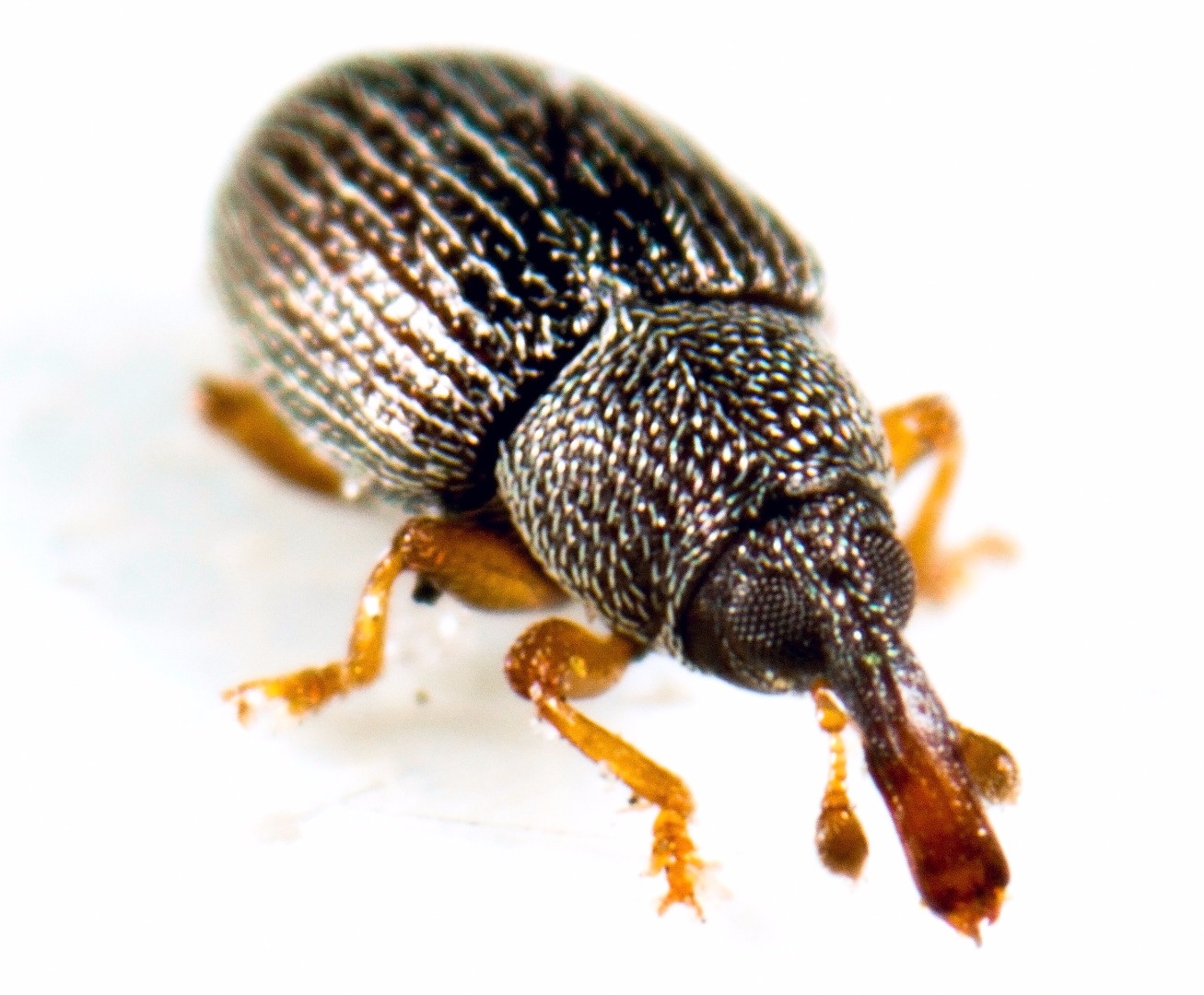Grain weevil
(Sitophilus granarius)
The grain weevil is often found in the warmer and more temperate countries – though not usually in the tropics. It exists as one of the most common pests of whole cereal grains and can cause excessive damage to the crops. Grain attacked by these weevils becomes hollowed and spoiled by a build-up of dust and faecal matter – which also facilitates the growth of mould. Although the grain weevil cannot breed in temperatures lower than 13°C, it is adept at surviving in colder conditions and therefore the UK serves as a suitable location for this pest.
Life cycle:
Complete metamorphosis
| Egg | The female grain weevil, with an elongated snout, creates a small hole in the grain selected for the development of larvae. Over a period of approximately 9 months, the weevil can lay up to 350 eggs at a rate of up to 1-2 per day. | |
| Larva | Once hatched, the larva penetrates further into the grain. For up to 14 weeks, this legless grub will go through up to 4 moults. | |
| Pupa | After fully developing, the adult weevil extracts itself from the grain using its teeth – leaving the grain both hollowed and spoiled. | |
| Adult | Small in size, the grain weevil measures between 3-4mm and is dark-brown in colour. Dimpled, with an elbowed antennae, the adult has a distinctive elongated snout – which is used to burrow in and out of grains. |
Habitat
The grain weevil exists as an indoor pest of whole grain – though is occasionally discovered within hard cereal products such as spaghetti and macaroni. Though it can be found in many of the temperate parts of the world, it is especially common in the UK with the mild climate providing a hospitable environment for this pest.




